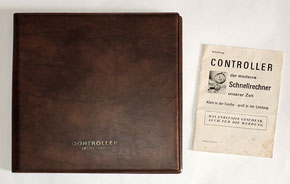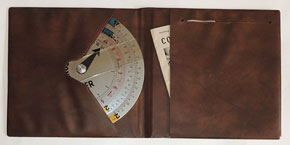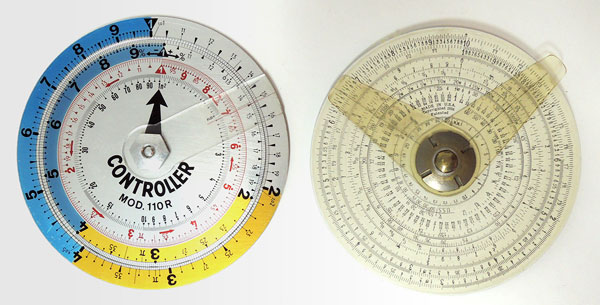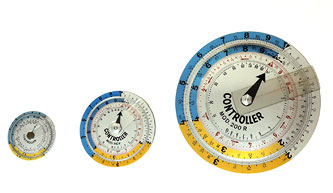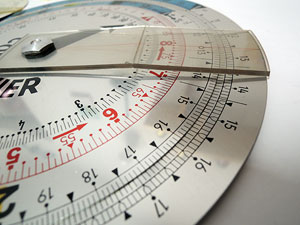
|

|
Hence the mystery: these are very well-constructed devices, but
their design makes them inferior as precise engineering tools. So
again: what is going on?
The answer, it seems, is that these are not meant to be
precise engineering tools at all. In fact, they are only able to do
multiplication, division, and squares and cubes (in two of them, the
ones with an R suffix to the model number, the cubes scale has been
replaced with a red scale for reciprocals). This is definitely
insufficient for serious engineering work, where at least the
trigonometric functions are a must.
This suspicion is strengthened when you read the detailed
instruction manual. I have the German version, but master collector
Bob Wolfson from the US was kind enough to share a scan of the
English version in
his possession. The examples in the manual are all about commercial
calculations like margins, compound interest and expenses; no rocket
science there. In fact, the manual starts with more than a page
explaining how to read “the graduation” -- how to read numbers on a
scale. No engineer would ever require that.
The manual also sheds light on the most visually striking
aspect of the Controller: the blue and yellow background color of
sections of the main scales. This turns out to be a color code
denoting the scale resolution: in the white part of the scale
(between 1 and 2), each smallest division represents 0.01; in the
yellow part (between 2 and 4), each division represents 0.02; and in
the blue part (4 to 10), it represents 0.05. This decrease in
resolution results from the nature of a logarithmic scale, and is
seen on all slide rules; any user with a technical background would
have taken it in their stride, without any need for color coding.
But the Controller is not meant for them.
To conclude this matter, here is a little ditty from the
German manual, with the best translation I could generate:
|
Ob per Auto oder Roller
In der Tasche den Controller.
Denn: “Köpfchen” muß nicht
jeder haben
Controller gibt’s jedoch im Laden. |
Whether by car or by scooter
In the pocket carry the Controller.
Because: “brains” not everyone
must have
However, there are
Controllers in the store. |
Get it? They are actually bragging that their product frees their
customers from the need for having a “Köpfchen” -- which the
dictionary translates as (informal) brain; wit; intellect, and which
I might more charitably interpret as “a head for numbers”. This is a
slide rule for the numerically challenged; and evidently there were
quite a number of those willing to buy it, because the company
must’ve been doing a brisk business for some time, seeing how
they’ve introduced all these beautiful models one after the other.
I have very little information about the company, Controller
Calculator KG, itself -- only that it was owned by one Erwin v. Stojkovits, and was in operation in the 1950s and 1960s at various
addresses in Munich. The German manual I have is dated 1970.
And a last, unsolved mystery: how would a merchant, used to
the total precision of an adding machine, feel comfortable using a
slide rule, which by its very nature gives approximate results? I
have no idea... |
 Up
Up


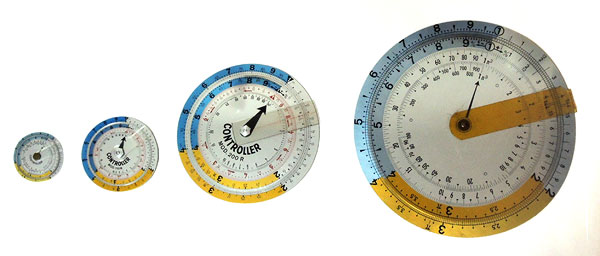
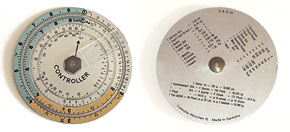
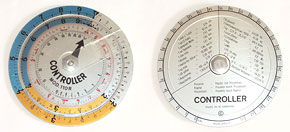
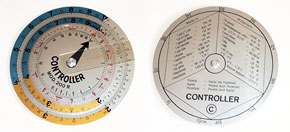
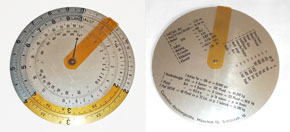 Model 200R (20 cm)
30 cm unit
Model 200R (20 cm)
30 cm unit